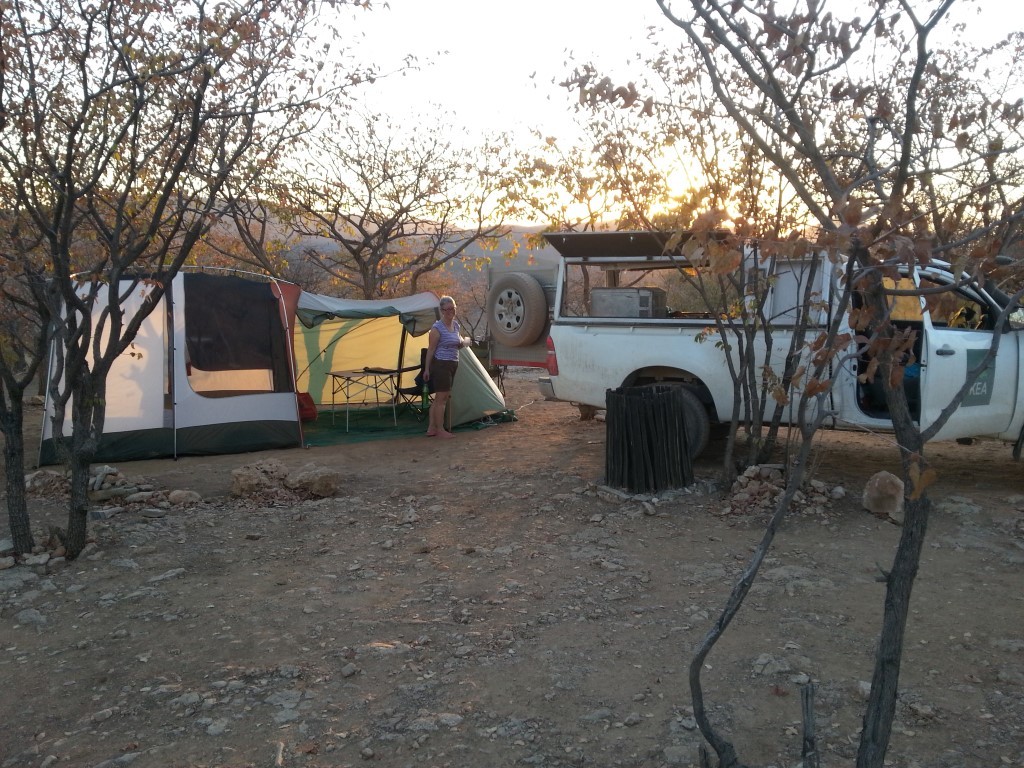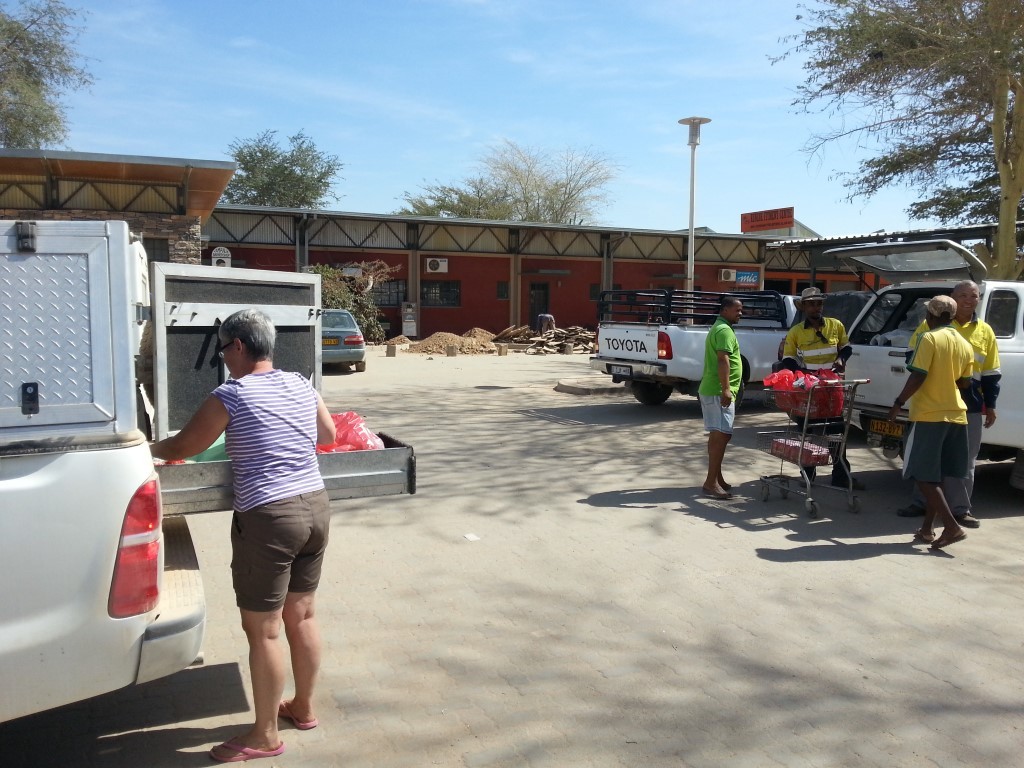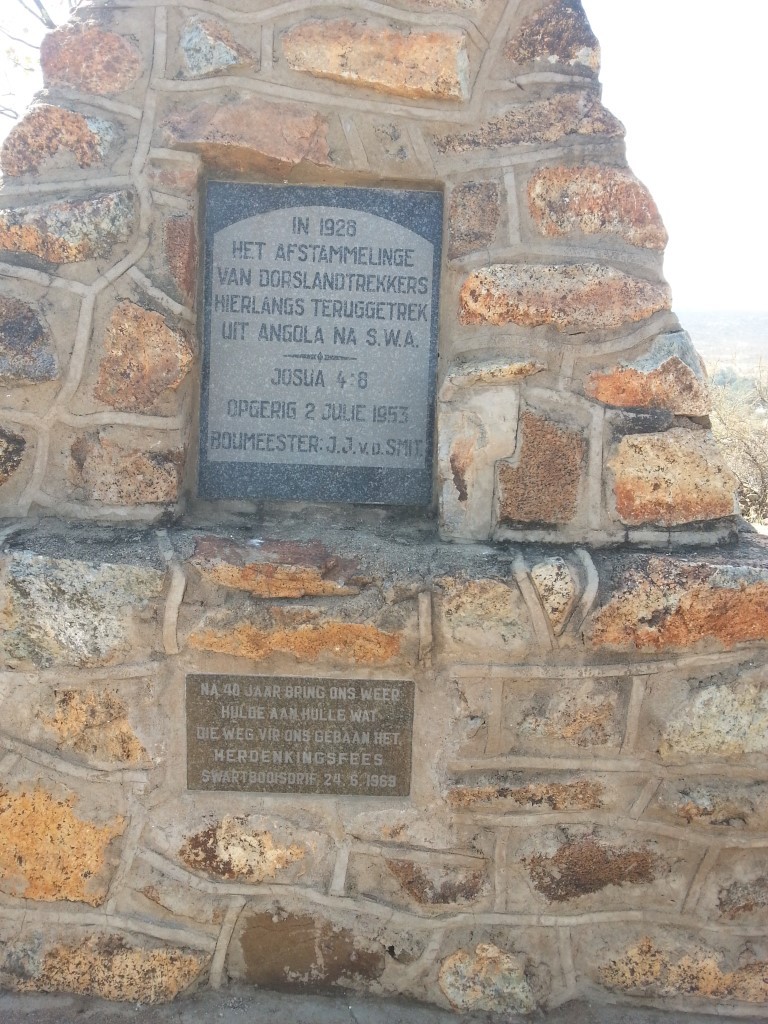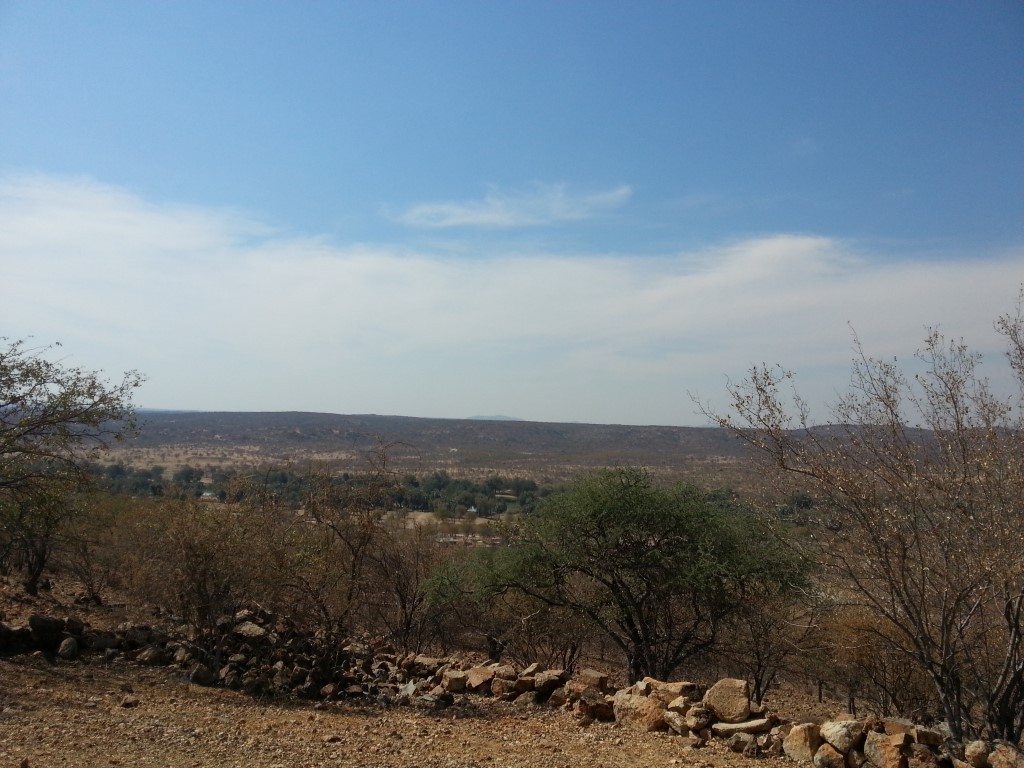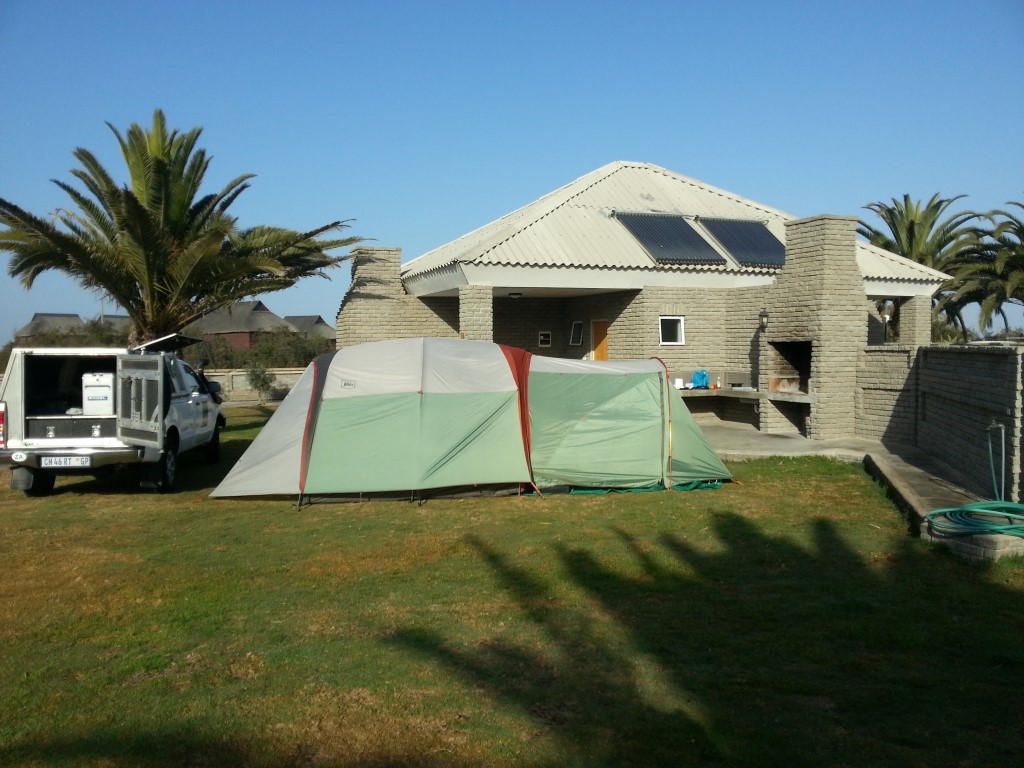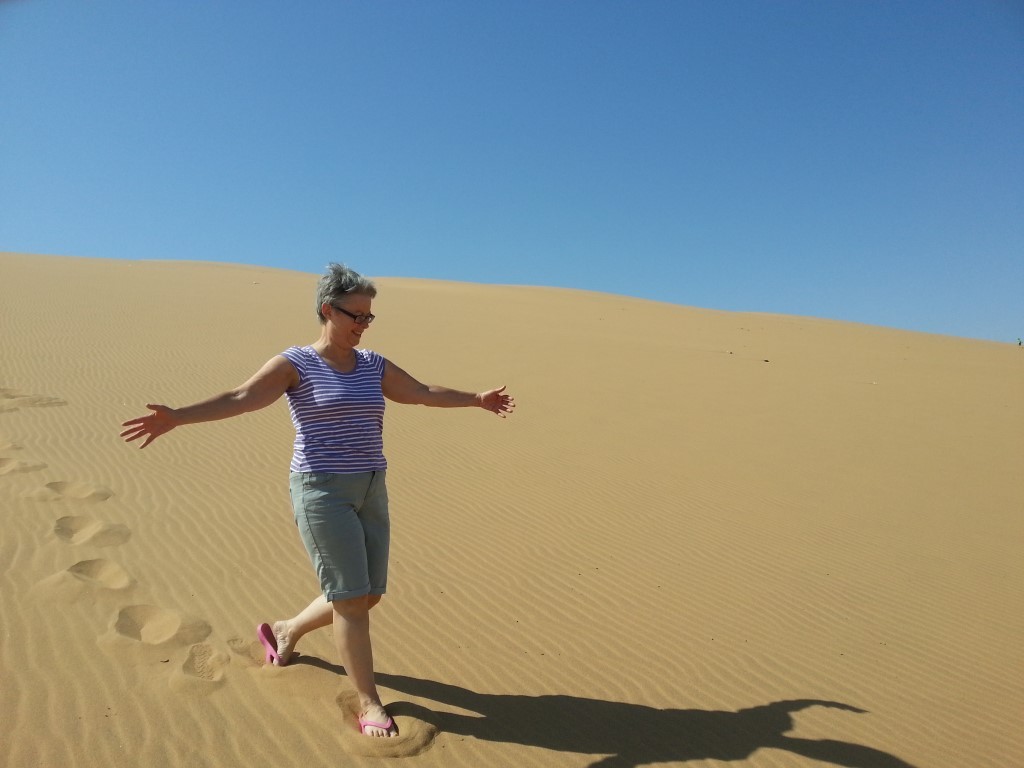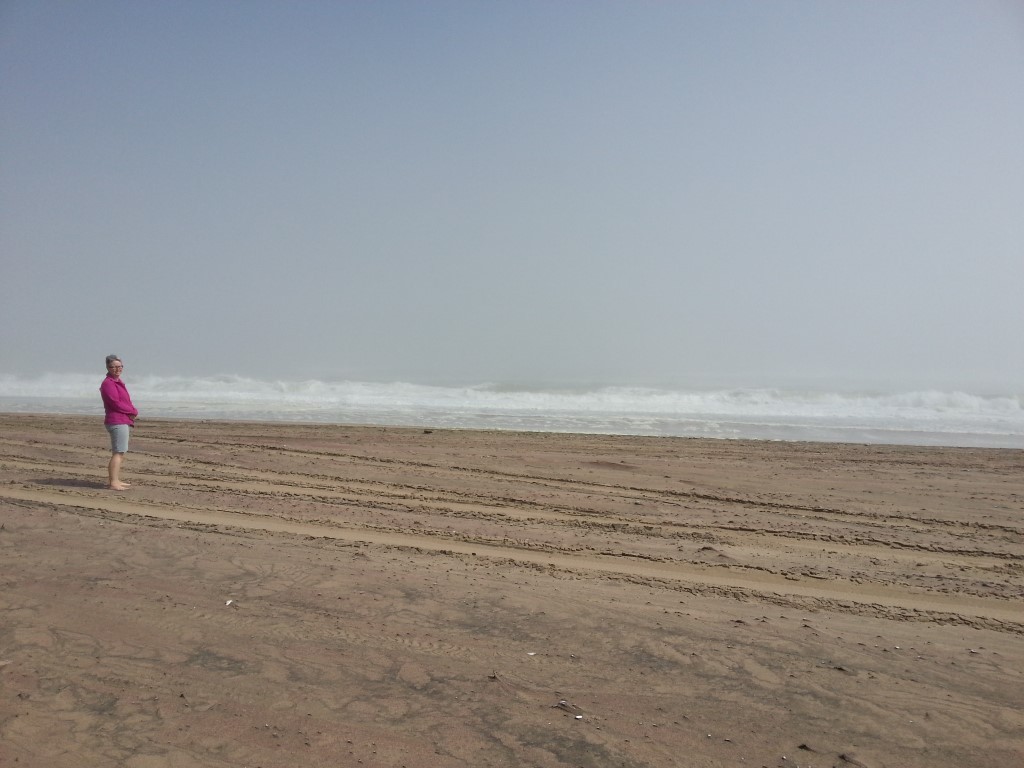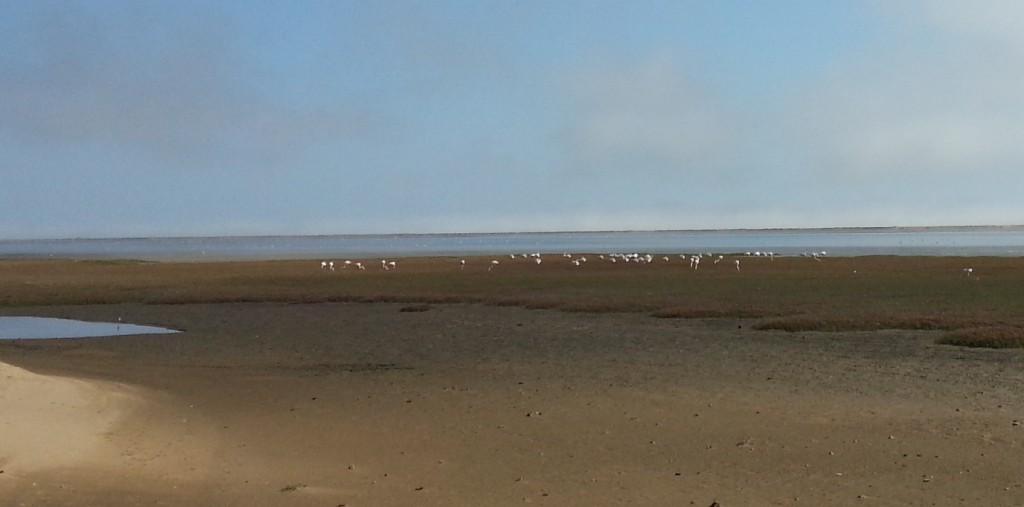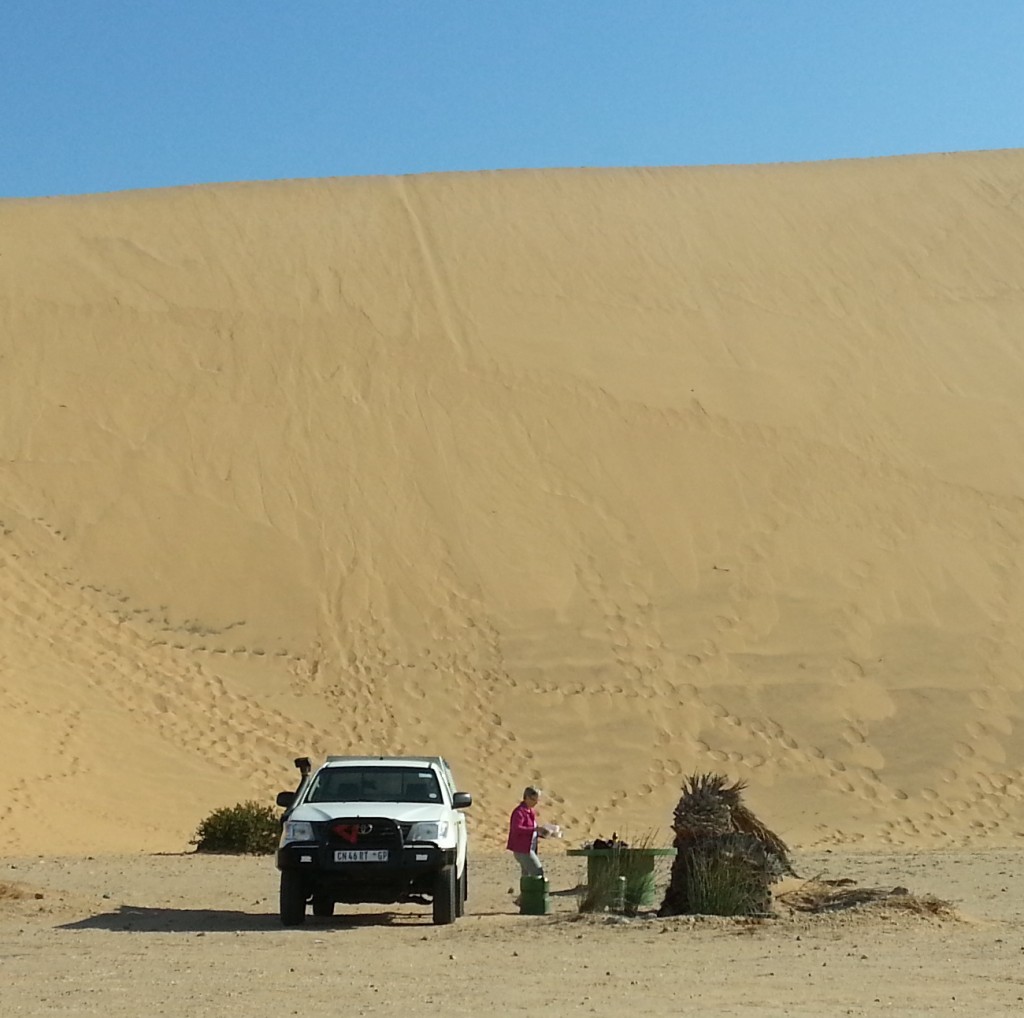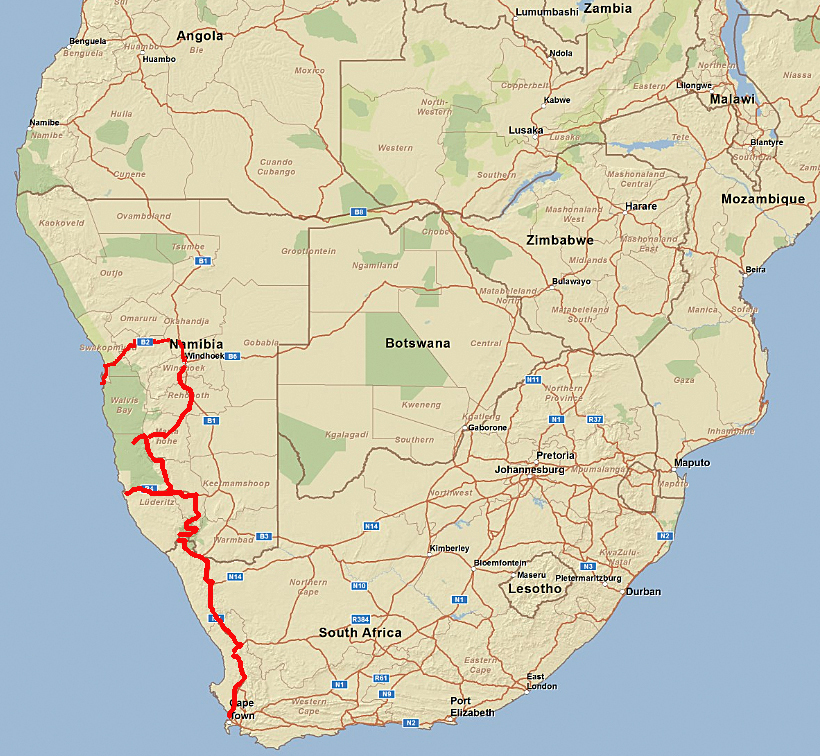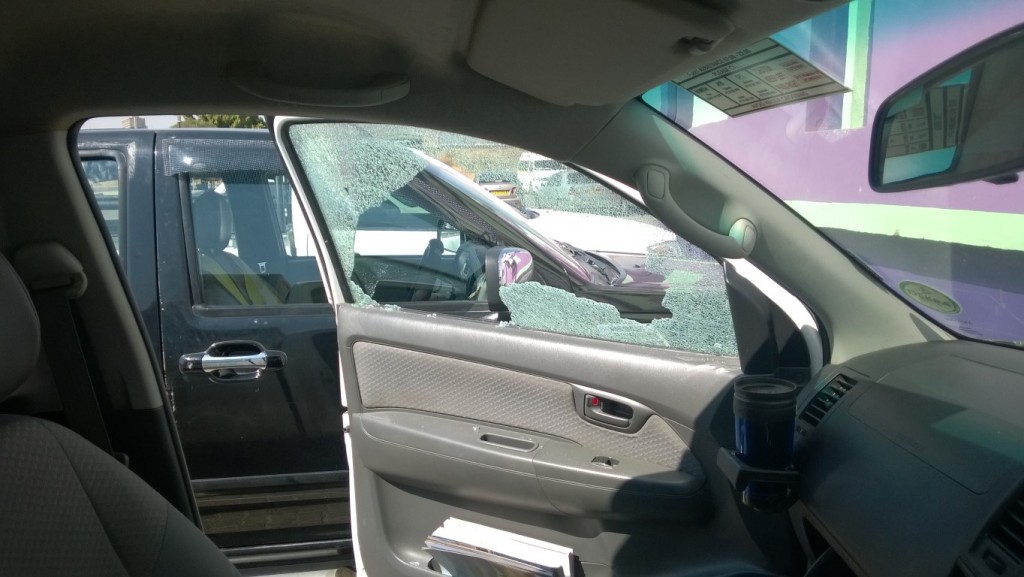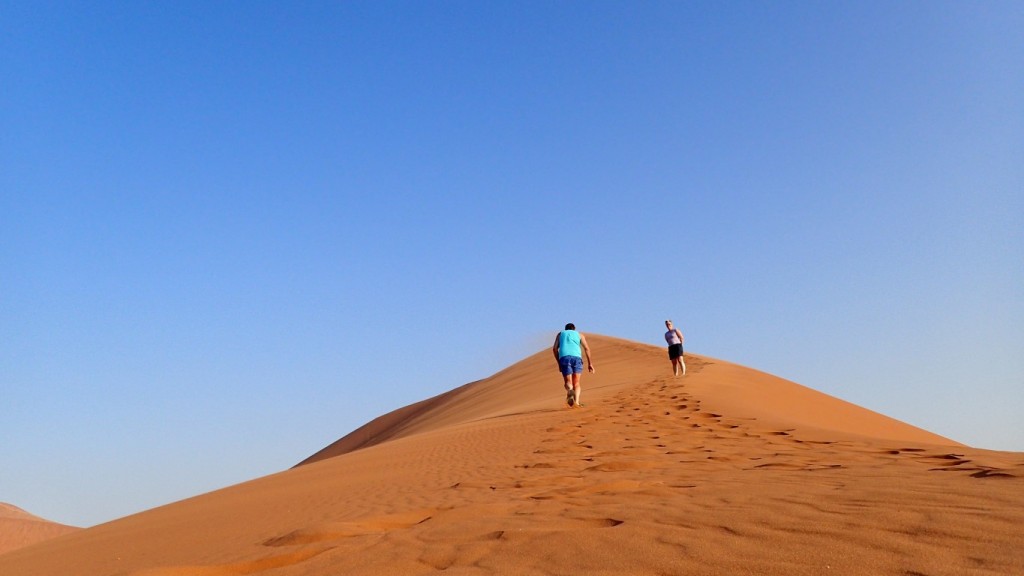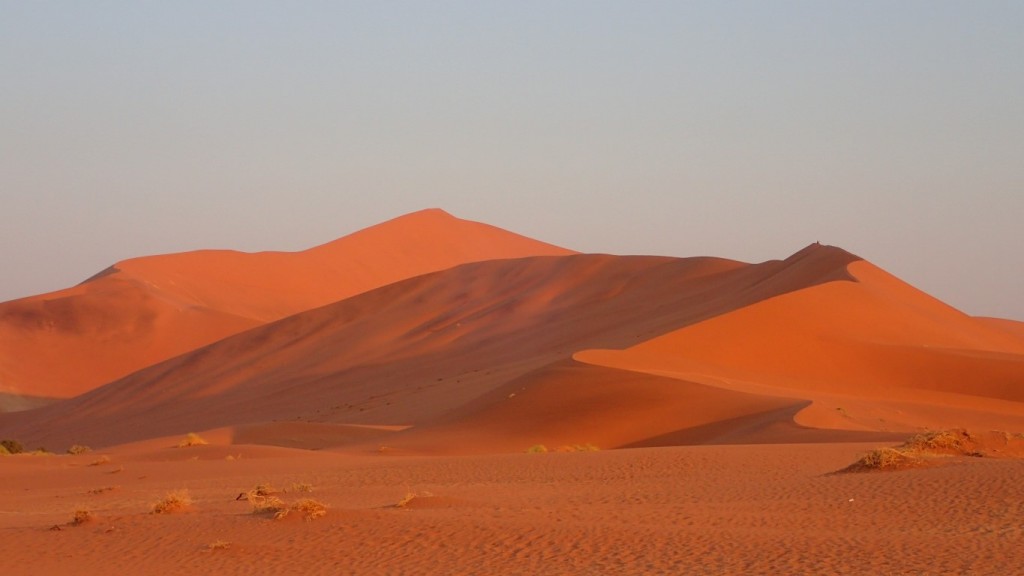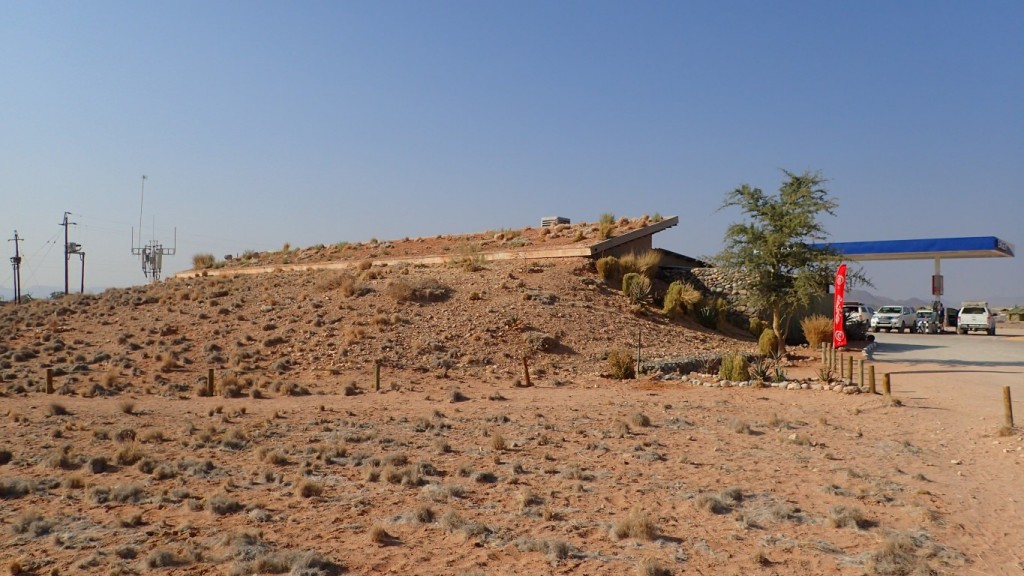We’ve been to a few places and done a bit of stuff, but nothing prepared us for our visit to Opuwo. We stayed in the campground at the Opuwo Country Lodge last night. It’s set on a hill above town, with great 360 degree views. The reception-restaurant-gift-shop building has the largest thatched roof in the southern hemisphere. The campground was nicely laid out and it was good to be away from the wind and dust of the last few days.
The eye-popping stuff started this morning when we went to get fuel and some food. The retail area of Opuwo is a seething hub of people. Local Himba women with their plaited hair covered in ochre mixed with butter, wearing a short skirt made of hide, some jewellery and not much else. One tried to sell me some jewellery, and I stood behind another young Himba woman in the supermarket. They walk barefoot and their feet must be tough – there are loads of thorny bushes, prickles and other sharp objects all around.
At the other end of the scale were the Herero women dressed like Mammy from Gone with the Wind – voluminous colonial-style dresses with long skirts, crinolines, petticoats, shawls and horn-shaped headgear made from the same fabric as the dresses. Some of the women wore a variation of the dress, but made of patchwork. And then there were the men – Himba men wearing a fabric loincloth at the front, with a hide cloth covering their bottoms. There were some dapper older dudes wearing trousers, long-sleeved shirts, buttoned-up cardigans and carrying walking canes, and even a young guy with a bow tie.
It was an amazing parade of humanity and while we were buying fuel I commented to Greg that I felt like I’d landed on Tatooine, or some other distant planet far, far away. Adding to the entertainment were cows wandering across the street, locals selling stuff by the side of the road, people trying to hitch a ride or just sitting waiting.
We’ve had a few days of wind and dust, but now we’re camped on grass by the Kunene River in the far north of Namibia. Angola is on the other side of the river. When I was being shown to the campsite, I asked if there were crocodiles in the river …. ‘only on the Angola side’. Er. right. It’s not a very wide river, so those crocs might just sneak over this side. We’ve done 2 tyres in the last couple of days. One also has bent rims, but Greg and a fellow camper were able to plug the other one, so we do still have a spare (we started with 2 spares).
We’ve been as far north, and as far west as we’ll travel on this trip. Now we’ll head east to the Caprivi Strip – a weird, narrow strip of Namibian land in the north east, between Botswana to the south and Angola & Zambia to the north.
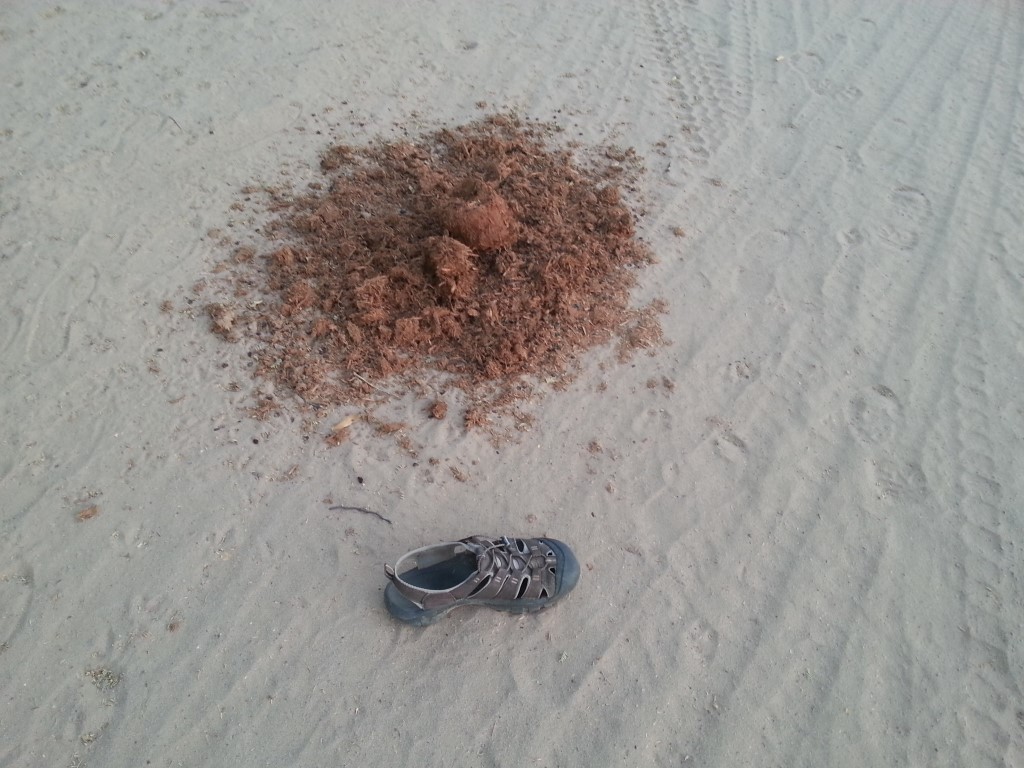
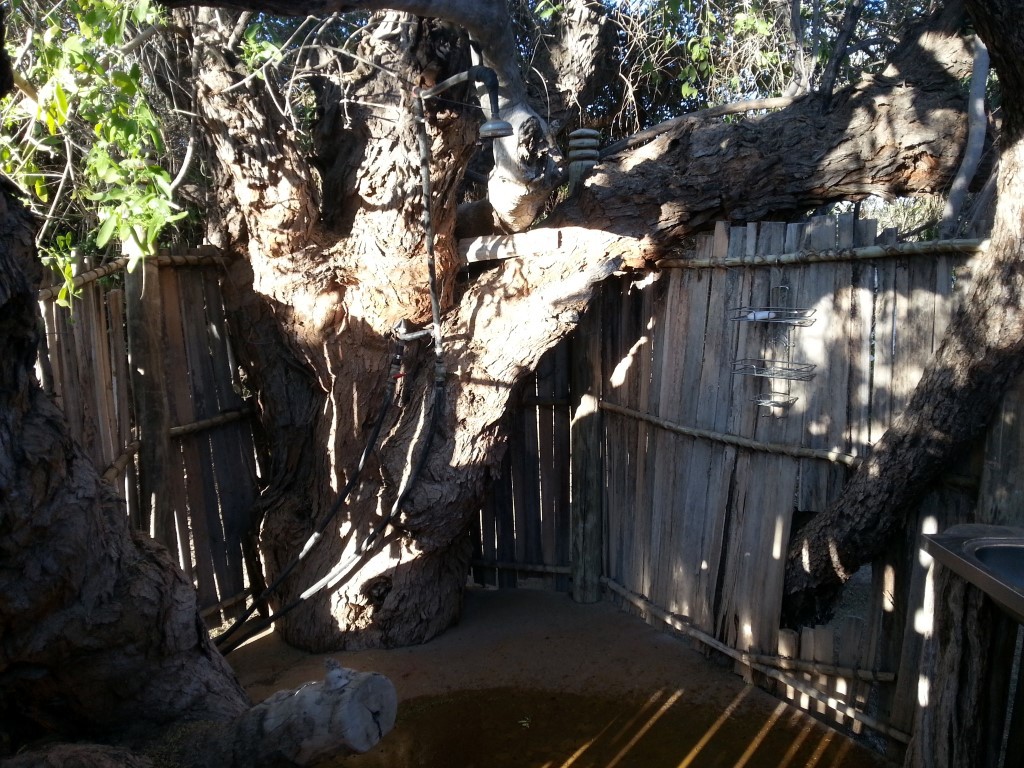
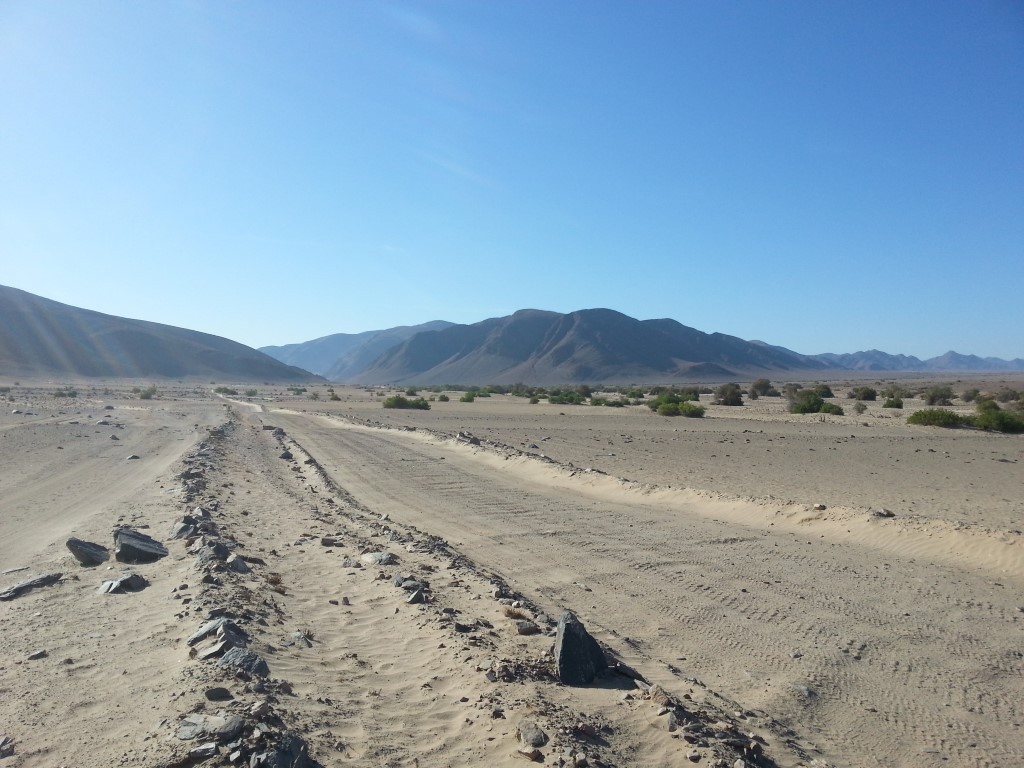
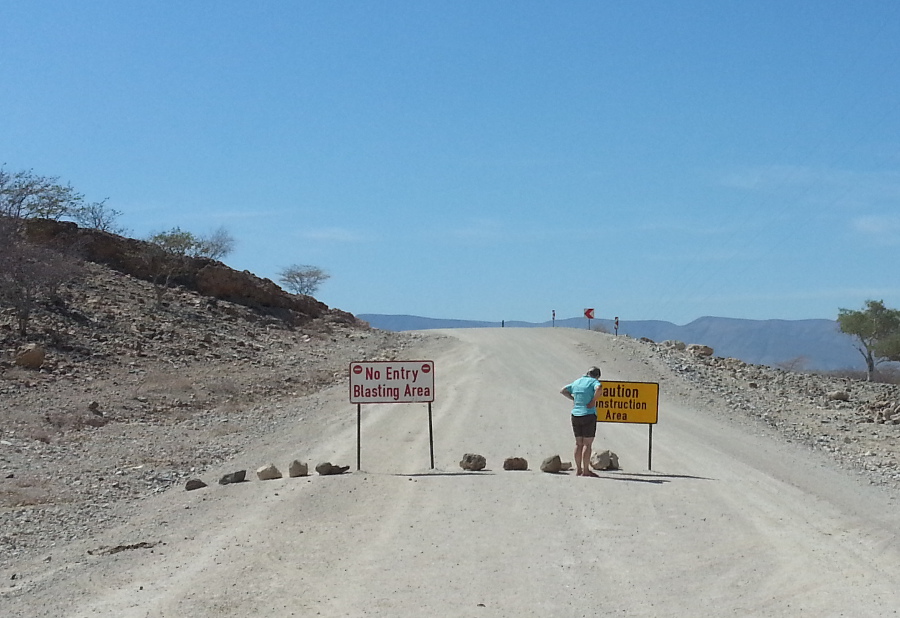
A drive through Opuwo
